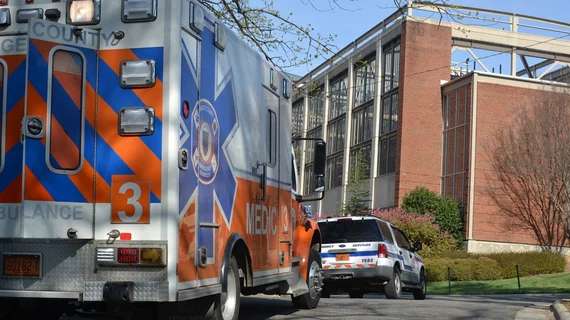HHS launches new model for ambulatory services to serve outside the ED
HHS and the Center for Medicare and Medicaid Innovation introduced a new payment model for emergency ambulance services aimed at getting fee-for-service beneficiaries the appropriate level of care at a lower cost.
The new model––dubbed the ET3 model, for Emergency Triage, Treat and Transport––encourages the development of medical triage lines for low-acuity 9-1-1 calls. Participating ambulance supplies and providers can earn up to a 5 percent payment adjustment in the later years of the model if they hit key quality measures.
Specifically, it allows participating ambulance suppliers to deliver treatment options, including on the scene or telehealth. Medicare beneficiaries that use 9-1-1 services can also be taken to alternative destination sites, such as urgent care clinics or primary care doctors’ offices following a medical emergency.
“This model will create a new set of incentives for emergency transport and care, ensuring patients get convenient, appropriate treatment in whatever setting makes sense for them,” HHS Secretary Alex Azar said in a statement. “Today’s announcement shows that we can radically rethink the incentives around care delivery even in one of the trickiest parts of our system. A value-based healthcare system will help deliver each patient the right care, at the right price, in the right setting, from the right provider.”
Through these changes, the ET3 model will test two ambulance payments in addition to paying for emergency transport to a hospital emergency department. Currently, Medicare primarily pays for transportation to a hospital ED for beneficiaries, even if another treatment option is more appropriate.
Medicare will pay for treatment in place with a qualified healthcare practitioner, on-the-scene or using telehealth. The program will also pay for emergency transport of Medicare beneficiaries to other destinations beyond the hospital, such as 24-hours care clinics, that aren’t currently covered by regulations.
The model is expected to start in 2020 with a five-year performance period. Participating providers and suppliers are also encouraged to partner with Medicaid agencies to boost access to model interventions.
CMS will release a request for applications in summer 2019 to solicit Medicare-enrolled ambulance suppliers and providers.

